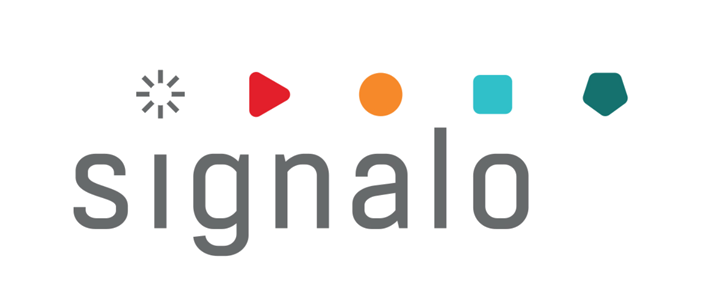Resource Management
The Role of IT Systems in Resource Management of a Manufacturing Company
In an increasingly competitive global market, companies need to efficiently allocate and utilize their resources to ensure profitability, customer satisfaction, and overall business sustainability. As technology continues to advance, the integration of IT systems has become an indispensable tool for managing resources effectively in manufacturing companies.
Definition of resource management in the context of manufacturing companies
Resource management in manufacturing companies refers to the strategic planning and allocation of various resources, such as raw materials, equipment, and workforce, to effectively meet production demands and optimize overall operational efficiency. It involves the careful coordination and utilization of these resources to ensure smooth operations and achieve organizational goals.
How efficient resource management leads to improved productivity, cost optimization, and competitive advantage?
- By effectively managing resources, companies can streamline operations, reduce wastage, and enhance overall productivity. This enables them to meet customer demand efficiently, increase output, and achieve higher levels of customer satisfaction.
- Optimal resource management enables manufacturing companies to identify cost-saving opportunities and implement effective cost-cutting measures. By analyzing resource utilization patterns, companies can identify areas where waste is occurring and take proactive steps to eliminate it. This leads to reduced operational costs and improved profitability.
- Efficient resource management provides manufacturing companies with a competitive edge. By effectively allocating resources, companies can respond quickly to market changes, adapt to customer needs, and offer high-quality products at competitive prices. This ability to deliver superior products and services gives them a competitive advantage over their rivals, increasing their market share and ensuring long-term sustainability.
Examples of key resources in manufacturing companies and their impact on overall operations
Manufacturing companies rely on various resources that have a significant impact on their overall operations. These include raw materials, equipment, and workforce.
Raw materials
Efficient resource management ensures an adequate supply of raw materials, reducing the risk of production delays or disruptions. Companies must monitor inventory levels, forecast demand, and establish strong supplier relationships to ensure a steady supply of raw materials.
Equipment
Proper maintenance, regular upgrades, and efficient utilization of equipment are crucial to maximize productivity and minimize downtime. Effective resource management involves ensuring that equipment is well-maintained, optimizing its usage, and investing in new technologies or machinery when necessary.
The workforce
Efficient resource management involves hiring skilled employees, providing them with adequate training and development opportunities, and maintaining a motivated workforce. Proper resource allocation ensures that the right employees are assigned to appropriate tasks, resulting in increased productivity and overall operational efficiency.
The Role of IT Systems in Resource Management
In this chapter, we will delve into the significant role that information technology (IT) systems play in resource management within a manufacturing company. Specifically, we will explore commonly utilized IT systems, their functionalities, and how they facilitate seamless coordination across different resources, departments, and processes.
Computerized Maintenance Management System (CMMS)
One of the most widely used IT systems in resource management is the Computerized Maintenance Management System (CMMS). CMMS is helpful in optimizing resources. That integrates various maintenance functions, including preventive maintenance, work orders, inventory management, and asset tracking. By implementing CMMS, manufacturing companies can effectively schedule and allocate maintenance tasks, optimize inventory levels, and improve overall equipment effectiveness (OEE).
Forkfleet system
Another IT system in resource management is Forkfleet, a forklift management system. Forklifts are vital assets in manufacturing facilities, and managing them efficiently can significantly impact productivity and safety. Forkfleet provides real-time tracking of forklifts, allowing managers to optimize their utilization, reduce downtime, and enhance operators safety. Through data analytics and reporting capabilities, Forkfleet enables better decision-making in utilizing of forklift fleet.
Cluer system
Employee suggestions are invaluable for process improvement and innovation in manufacturing companies. Cluer is an IT system that facilitates employee suggestions and feedback. It provides a platform for employees to share their ideas, report issues, and contribute to continuous improvement initiatives. By leveraging Cluer, manufacturing companies can tap into the collective intelligence of their workforce, fostering a culture of innovation, and enhancing employee engagement.
Facilitating Seamless Coordination Across Resources, Departments, and Processes
IT systems play a pivotal role in facilitating seamless coordination across various resources, departments, and processes within a manufacturing company. By integrating different functions through centralized platforms, such as CMMS, Forkfleet, and Cluer, information flows smoothly across the organization. For instance, CMMS enables maintenance teams to communicate effectively with production departments by scheduling maintenance activities based on machine availability. Forkfleet ensures that forklift usage aligns with production requirements, optimizing material flow and minimizing bottlenecks. Cluer enhances communication channels by providing a platform for employees to collaborate, improving problem-solving capabilities and fostering cross-functional collaboration.
The Role of Real-time Data, Analytics, and Forecasting Capabilities
One of the key advantages of IT systems in resource management is the generation and utilization of real-time data, analytics, and forecasting capabilities. By capturing real-time data from various sources, such as equipment sensors and employee feedback, IT systems provide valuable insights into resource utilization, performance trends, and potential bottlenecks. These systems leverage advanced analytics algorithms to identify patterns, correlations, and opportunities for optimization. Additionally, forecasting capabilities help manufacturing companies anticipate future resource demands, enabling proactive planning and allocation.
Resource Management – Specific Applications of IT Systems
Production Planning and Scheduling
IT systems provide manufacturing companies with real-time visibility into their production capacities and capabilities. With accurate data on available resources such as machinery, materials, and labor, these systems enable managers to effectively plan and schedule production activities. By integrating various data sources, including sales forecasts, historical data, and current inventories, IT systems can generate optimized production plans that maximize efficiency and minimize costs.
- Advanced technologies such as artificial intelligence (AI) and machine learning play a significant role in enhancing production planning and scheduling processes. AI algorithms analyze vast amounts of data to identify patterns, trends, and correlations, enabling manufacturers to predict demand more accurately. By leveraging this predictive capability, companies can adjust their production plans proactively, ensuring optimal resource utilization.
- Machine learning algorithms, continuously improve production plans by learning from past performance and adjusting scheduling parameters accordingly. These algorithms consider factors like downtime patterns, equipment maintenance requirements, and labor availability to optimize production schedules and minimize bottlenecks.
- By adapting to changing conditions and making intelligent decisions in real-time, machine learning algorithms contribute to efficient resource management in manufacturing companies.
Workforce Management
One specific IT system that aids in workforce management is skills matrix software. This software allows companies to comprehensively track and manage employee skills, certifications, and qualifications. By maintaining an up-to-date repository of employee capabilities, managers can efficiently match the required skill set with specific production tasks. This ensures that skilled employees are assigned to tasks where they can contribute most effectively, optimizing resource utilization.
How it works?
Skills matrix software also enables managers to identify skill gaps within their workforce. By visualizing the distribution of skills across departments and teams, companies can identify areas where additional training or hiring may be necessary. This proactive approach to workforce management ensures that the manufacturing company has a well-rounded, capable workforce to meet production demands.
Benefits
Enhanced Visibility and Control over Resources
Gone are the days when resource management was done manually, leading to potential errors and delays. With the implementation of advanced IT systems, manufacturing companies can now benefit from enhanced visibility and control over their resources. These systems enable real-time tracking of raw materials, inventory, and equipment, providing managers with instant access to accurate information. This improved visibility allows for better planning, increased operational transparency, and proactive decision-making, resulting in optimized resource allocation.
Improved Decision-Making Based on Real-Time Data and Analytics
With the integration of sensors, machines, and production lines, these systems generate a vast amount of valuable data. By analyzing this data, manufacturing companies can identify patterns, trends, and bottlenecks in their resource management processes. Armed with this knowledge, managers can make data-driven decisions that lead to improved efficiency, reduced downtime, and increased productivity.
Increased Operational Efficiency and Productivity
Efficiency and productivity are key drivers of success in the manufacturing sector. IT systems offer a multitude of tools and functionalities that significantly enhance these aspects of resource management. For instance, automated processes, such as electronic data interchange and supply chain management systems, eliminate manual and time-consuming tasks. This automation not only reduces the probability of errors but also accelerates workflows, boosts operational efficiency, and, ultimately, enhances overall productivity.
Cost Optimization and Waste Reduction
In a highly competitive marketplace, is a top priority for manufacturing companies. IT systems provide valuable insights into resource utilization and expenditure, enabling businesses to identify opportunities for cost reduction. Through real-time monitoring, these systems help in identifying excess inventory, underutilized resources, and inefficient processes. Armed with this information, managers can take proactive measures to reduce waste, streamline operations, and cut unnecessary expenses. Consequently, these cost-saving efforts contribute to improved profitability and competitiveness.
Summary
The integration of IT systems into resource management has revolutionized the manufacturing industry. The benefits derived from enhanced visibility, improved decision-making, increased operational efficiency, and cost optimization cannot be understated. As technology continues to advance, manufacturing companies must recognize the critical role that IT systems play in effectively managing their resources. By embracing these systems, businesses can stay ahead of the competition, achieve sustainable growth, and navigate the complexities of the modern manufacturing landscape with ease.
Invitation to a free consultation
We have been introducing our proprietary IT systems to companies for years. Thanks to this, our clients achieve success in the form of increased efficiency, cost reduction, better organization and work safety. Contact us today and find out what optimization is possible in your specific case.
Values
Discover the benefits of collaboration
We offer a free consultation as the first step of collaboration, allowing you to familiarize yourself with our approach and verify our advisory competencies. This way, even before making a decision, you’ll feel that your situation and problem have been well understood, and the proposed solution will be optimally tailored to your company’s situation.
Our services (support) are included in a subscription, which does not generate hidden costs. The subscription-based billing allows for a significant reduction in the entry threshold into the system and enables immediate testing.
We are communicationally independent – we can develop our system without depending on the client’s IT department. We do not generate additional work for the client’s IT department. This way, we lower the implementation risk and associated costs. The possibility of quicker implementation of the solution results in faster return on investment.
Login to our applications is secured at a high level, characteristic of banking solutions. At the same time, the login process is intuitive. Your data is as secure as in a bank thanks to our system.
We offer multilingualism in our solutions through real-time translation—each employee operates applications in their native language. This enhances efficiency and reduces costs by expanding the potential labor market and eliminating the need to hire translators.
Our software features an interface optimized for quick, easy, and intuitive use, even by digitally excluded or poorly skilled employees. This means real-time savings in both time and training costs for your workforce in using the new software. The ability for rapid deployment of software for use results in a shorter transition/implementation period.
















